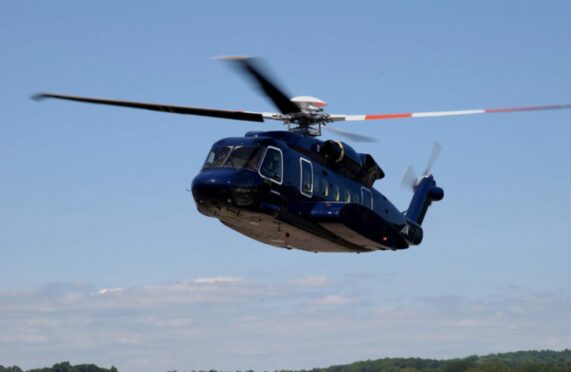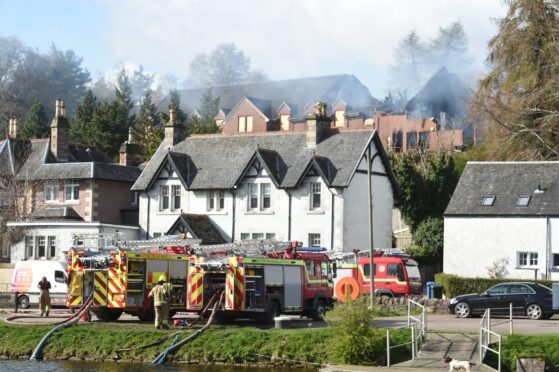A helicopter and a US military plane were involved in a near-miss over Caithness, investigators have revealed.
The American crew considered Wick a “sleepy little airport” and assumed the Scottish controllers were “out in the middle of nowhere”.
They later admitted they had perhaps been “a little bit relaxed” during their training flight onboard a twin-engine turbo prop C-12 Huron.
The near-miss happened about 14 miles south-east of Wick on October 20, at around 9.20am.
A mistaken altimeter pressure setting put the US aircraft hundreds of feet below its indicated altitude and into the path of a Sikorsky-92 (S92).
S92 pilot felt risk of collision was high
The helicopter pilot was routing to a ship while Wick air traffic control (ATC) cleared the C12, which was on the same track and same position as the S92, to descend to 4,000ft.
On its traffic alert and collision avoidance system (TCAS) display, the S92 crew then watched a contact descend to within one nautical mile.
The rate of descent was rapid and eventually indicated less than 1,000ft to their level, said the report to the UK Airprox Board.
It states: “They communicated their avoiding descent with ATC and expedited to altitude 2,000ft, remaining in visual meteorological conditions (VMC). They levelled at 2,000ft and the contact continued to descend and came within 500ft of their level.
“ATC repeated the clearance to the C12 pilot who climbed back to altitude 4,000ft. Based on their TCAS observation and the C12 pilot’s communication, the S92 crew surmised that the C12 pilot did not comply with their clearance and descended rapidly through the S92’s level and within one nautical mile.”
It goes on to say that although the helicopter crew did not see the plane and that their collision alert system did not go off, they “perceived” the C12 was behind them throughout the event. The pilot assessed the risk of collision as high.
‘Just a bit relaxed’
The C12 pilot was approaching the terminal area of Wick airport when they were confused over altimeter setting instructions from the controller.
Investigators said: “The pilot noted that they should have asked for clarification and had to admit that, at the time, they considered that because of the ‘sleepy little airport of Wick and the Scottish controllers out in the middle of nowhere’ maybe the controllers were just a bit relaxed. In retrospect, the pilot considered that it was in fact themself who was ‘just a bit relaxed’.
“As they descended a couple of hundred feet past 4,000ft, the pilot heard a helicopter pilot call the controller and ask about the C12’s descent.”
At that point the C12 pilot realized the error and immediately arrested the descent.
“With the correct setting, they could see that they were nearly 500ft below the assigned altitude and immediately climbed back up to 4,000ft. The pilot and co-pilot discussed the incident immediately after occurrence,” adds the report.
Cross-checks and communication key
A safety investigation at Wick found that the primary cause of the Airprox was the C12 pilot not adhering to the Wick ATC’s instruction to descend and maintain altitude at 4000ft, which resulted in the aircraft descending towards the transiting S92.
The Airprox Board commended the S92 crew “for their presence of mind”.
“It was apparent that the C12 pilot had descended below their cleared altitude having set the incorrect altimeter pressure setting,” said the board.
They ruled this was due to a combination of faulty crew resource management, the altimeter pressure setting, and the use of incorrect phraseology by the Wick controller in omitting the term ‘hectopascals’.
Members felt the C12 co-pilot, having set the correct altimeter pressure setting, should have warned the pilot flying they had descended below the cleared level.
They also stressed the importance of cross-checks.
“Altimeter cross-checks should occur, at least, after a change in altimeter pressure setting.”
The board also discussed the “lack of effective communication” from both the Wick controller and C12 pilot.
In their findings, they said: “Turning to risk, members agreed that there had not been a risk of collision but also that normal procedures had not been complied with.”
The incident was rated as C.











Conversation